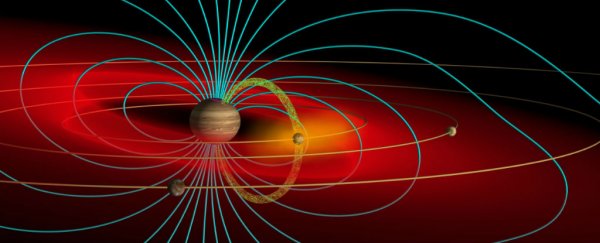Our entire understanding of the Universe is based in no small part on the mathematical models and simulations that scientists come up with to explain the weirdly consistent patterns that keep cropping up in nature.
From eerie sequences turning up in prime numbers and language, to the strange circuits followed by the vast natural phenomena that encircle our planet and beyond, maths is inescapable. Or so it seems. Are we just fooling ourselves into thinking the Universe can fit so precisely into our neat little number patterns?
As the latest episode of MinutePhysics explains, it's pretty crazy how often actual mathematical algorithms turn up in nature - and how different models can be used interchangeably to explain various systems.
Take Jupiter's moons, for instance. In 1610, Galileo was the first to figure out that when you plot the movements of Jupiter's moons as they orbited around the most massive planet in the Solar System, they spun exactly like giant balls attached to unfurling coils of wire.
Yep, more than four centuries ago, Galileo figured out that if you plot the motions of Jupiter's moons over time, you get an actual sine wave, as shown by this Twitter account, which visualised this back in 2013:

Plot the movements of an object bouncing up and down on a spring, and you'll get the same result. (Check out Galileo's actual notes in the links below the video.)
This isn't just a fluke - you can use this model in conjunction with another model that uses gravity to explain the invisible circles of orbiting planets and moons, and both will give you the same predictions.
If you want to predict quantum phenomena, you've actually got three different models that will give you the same predictions, but using an entirely separate set of rules: Bohm, Schrodinger, and Feynman.
But if all of these models give you the same result, perhaps that means that none of them is the right way to make the best prediction of a natural phenomenon, says Henry at MinutePhysics.
How does that work? Well, we humans love to put things into categories, we love finding patterns and order in things, and from atoms to neutron stars, nature seems to want to play along.
But that's a dangerous way of thinking, because we might be obscuring the reality of what's actually going on, because we're so preoccupied with finding patterns in things.
"We need to be careful how much weight we give to the models in our heads, or on our blackboards or computer screens," says Henry.
"The way we describe the world influences the way we think the world is. Even when there are other, equally correct ways of describing the world that paint entirely different pictures from our own."
Check out the video above to find out why, and then watch below to find out how all of that inevitably leads to conspiracy theories:
